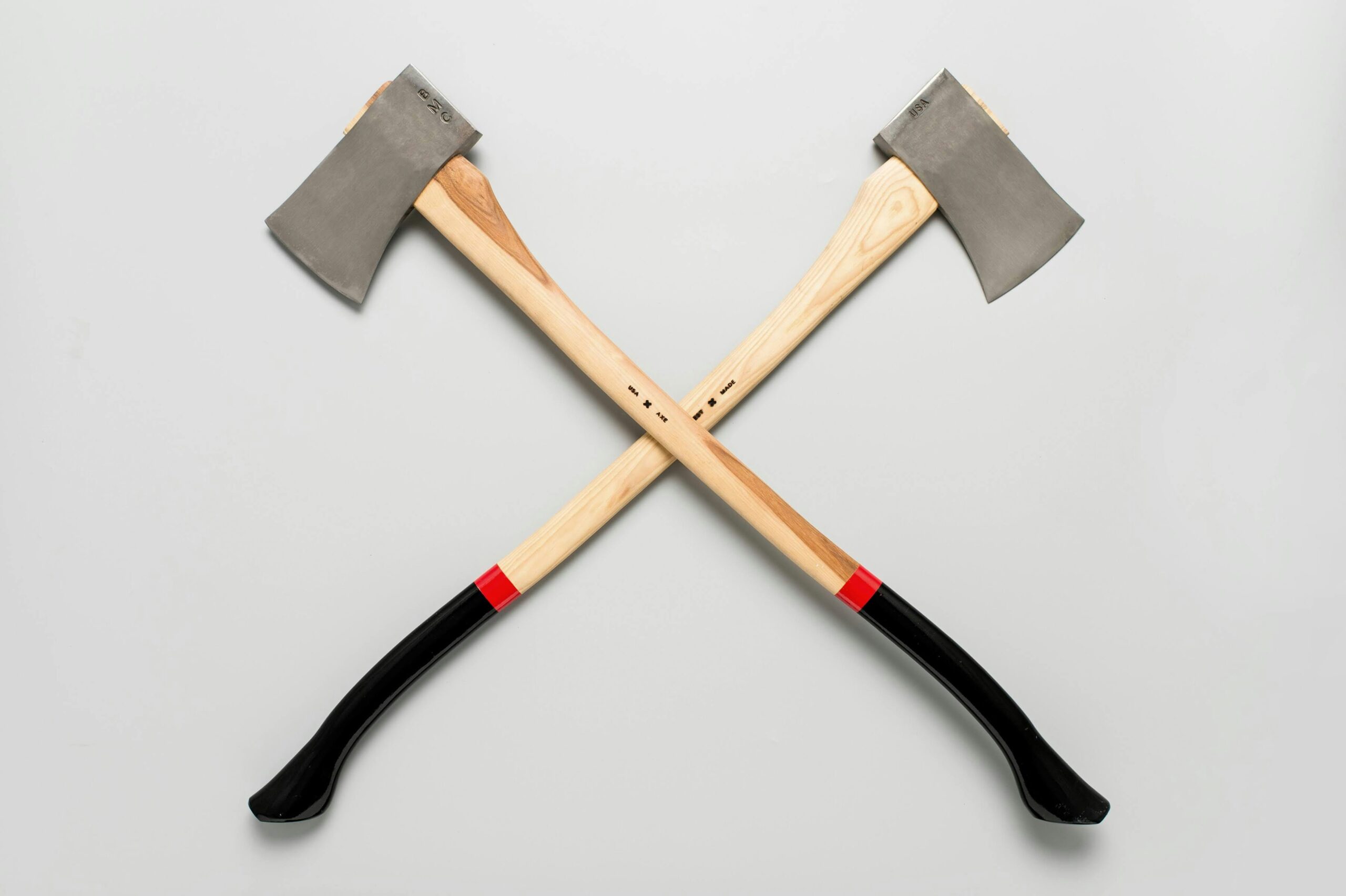Are you ready to join the exciting world of axe-throwing competitions? With the rise of leagues under the National Axe Throwing Federation (NATF) and organizations like WATL, learning the rules can be a challenge. This guide will cover the essential regulations for competitors, equipment standards, and the conduct expected during matches. By understanding these rules, participants can enjoy a fair and fun experience while avoiding common pitfalls. Get ready to sharpen your skills and impress the referee with your knowledge of axe-throwing competition rules.
Key Takeaways
- Axe-throwing competitions have standardized rules that ensure fairness and safety
- Understanding axe specifications is crucial for competitors to perform well and prevent injuries
- Participants must wear safety gear to protect themselves and comply with competition guidelines
- Fair play and sportsmanship are essential values in axe-throwing competitions
- Mental preparation and training improve performance in competitions and build confidence
Understanding the Basics of Axe Throwing Competitions

Axe-throwing competitions have a rich history, evolving over time into popular tournaments governed by standardized rules. Understanding the measurement of the axe handle and the significance of hitting the bullseye is crucial for participants. Major organizations promote sportsmanship and ensure fair play, making studying these rules essential for anyone interested in competitive axe-throwing.
History and Evolution of Competitive Axe Throwing
The history of competitive axe throwing dates back centuries and is traditionally rooted in woodcutting and survival skills. Over time, this activity transformed into a sport, establishing formal competitions with clear rules and a code of conduct. Today, events often include brackets for tournament-style play and specific guidelines to determine faults and tiebreakers, ensuring fair competition among participants.
Overview of Major Axe-Throwing Organizations
Major organizations play a crucial role in regulating and promoting axe-throwing competitions. These bodies create structured rules for various formats, including the use of hatchets and tomahawks, while also overseeing playoffs that determine champions. They focus on fair play and sportsmanship, addressing situations such as ties with clear guidelines to enhance the competitive experience for all participants.
- Regulation of axe-throwing rules
- Use of hatchets and tomahawks
- Organization of playoffs
- Focus on sportsmanship
- Guidelines for resolving ties
Importance of Standardized Rules in Competitions
Standardized rules are essential in axe-throwing competitions as they ensure fairness and safety for all participants. For instance, rules regarding what constitutes a stalemate can prevent disputes during tight matchups, while clear guidelines for sudden-death scenarios can help resolve ties effectively. Additionally, establishing protocols can reduce the risk of injury by emphasizing safety measures, which is a priority in organizations like the World Axe Throwing League.
Equipment Regulations for Competitors

The regulations for axe-throwing competitions cover several key areas. First, specific specifications for the axes used ensure their safety and effectiveness. Next, safety gear requirements must be met to protect participants during matches. Finally, maintaining equipment according to competition standards is essential for fair play and performance. Understanding these guidelines helps competitors prepare adequately for events.
Specifications for Axes Used in Competitions
In axe-throwing competitions, the specifications for axes are key to ensuring safety and fair competition. Generally, axes must have a specific weight and size, often ranging from 1.5 to 2.5 pounds, with a handle length of around 14 to 16 inches. Competitors should also ensure their axes have a proper blade design, which must be sharp enough to stick in the target but not so sharp that it poses a risk during practice or competition. Following these specifications helps participants perform at their best while adhering to the established competition rules.
Safety Gear Requirements
Safety gear requirements in axe-throwing competitions are designed to protect participants from injury. Competitors should wear closed-toe shoes to prevent foot injuries and gloves to enhance grip and prevent blisters. Additionally, protective eyewear is highly recommended to shield against any accidents that could occur during throws. Following these safety measures complies with competition rules and promotes a secure and enjoyable environment for all involved.
Maintaining Equipment According to Competition Standards
Maintaining equipment according to competition standards is vital for ensuring safety and performance in axe-throwing events. Participants should regularly inspect their axes for any damage or wear that could affect their throws. Proper maintenance practices, such as keeping the blade sharp and the handle in good condition, help competitors adhere to rules and enhance their overall experience during competitions:
- Regularly check axes for damage or wear
- Ensure blades are sharp but safe
- Keep handles in good condition
- Familiarize yourself with competition specifications
- Practice safe handling and maintenance techniques
Rules for Match Play and Scoring

Understanding the rules for match play and scoring is essential in axe-throwing competitions. This section covers standard match formats and structures that dictate how competitions are organized. It also explains the point systems for scoring throws, tie-breaker procedures, and overtime rules for resolving closely contested matches.
Standard Match Formats and Structures
Standard match formats in axe-throwing competitions typically involve head-to-head play where two competitors aim to score points by hitting designated areas on a target. Matches are structured in several rounds, often with each player taking turns to throw a set number of axes per round. Each axe throw earns points based on its accuracy, and the competitor with the highest score at the end of all rounds wins the match:
- Competitors take turns throwing axes.
- Points are awarded based on target accuracy.
- Matches consist of multiple rounds to determine the winner.
- The highest score at the end of the match wins.
Point Systems and How to Score
The point system in axe-throwing competitions is designed to reward accuracy and skill. Each target has specific zones that players aim for, with different points assigned to each area. For example, hitting the bullseye usually earns the most points, while the outer rings receive fewer points. Competitors take turns throwing a set number of axes, and scores accumulate over multiple rounds to determine the winner:
Tie-Breaker Procedures and Overtime Rules
Tie-breaker procedures in axe-throwing competitions come into play when competitors finish with equal scores. To resolve this, players typically engage in a series of additional throws, often called “sudden death” rounds, where each competitor attempts to score higher than their opponent on their next throw. These rules ensure that competitions remain fair and exciting, allowing every participant to demonstrate their skill even in tightly contested matches.
Competition Conduct and Sportsmanship

Competition conduct and sportsmanship are key elements in axe-throwing competitions. Guidelines for fair play help maintain a respectful environment, while penalties for rule violations ensure everyone adheres to established standards. Conflict resolution procedures further support a positive experience, allowing participants to address disagreements calmly and constructively. Understanding these aspects is essential for all competitors.
Guidelines for Fair Play
Guidelines for fair play in axe-throwing competitions emphasize respect and sportsmanship among competitors. Participants are encouraged to acknowledge their opponents’ skills and follow all established rules during matches. Upholding these standards fosters a positive competition environment and enhances the overall experience for everyone involved, making the sport more enjoyable and engaging for all players.
Penalties for Rule Violations
Penalties for rule violations in axe-throwing competitions are important to maintain fairness and respect among participants. Competitors who break established rules may face consequences such as point deductions or disqualification from the match. These penalties ensure that everyone adheres to the guidelines, fostering a positive environment for all involved in the competition.
Conflict Resolution During Competitions
Conflict resolution during axe-throwing competitions is vital for maintaining a positive atmosphere. If disagreements arise, competitors should first communicate directly and calmly with each other to clarify the situation. If the issue remains unresolved, they may seek assistance from a designated official, who can provide guidance based on the established rules and ensure that the competition proceeds smoothly.
Venue Setup and Safety Protocols

Venue setup and safety protocols are essential for hosting axe-throwing competitions. Specifications for throwing lanes and targets ensure consistency, while audience placement and safety measures protect spectators and participants alike. Additionally, judges and officials play a critical role in maintaining the rules and overseeing fair play, making their responsibilities vital for a successful event.
Specifications for Throwing Lanes and Targets
The specifications for throwing lanes and targets are vital for a smooth and fair axe-throwing competition. Each throwing lane should be at least 12 feet long to allow sufficient distance for safe throws, while targets must be securely mounted at a height of 5 feet from the ground. This setup ensures that competitors can focus on their skills without worrying about safety or inconsistencies in the competition environment.
Audience Placement and Safety Measures
Audience placement is a crucial aspect of the axe-throwing competition setup. Attendees should be positioned safely from the throwing lanes to avoid potential injuries. Additionally, clear barriers or designated areas can enhance safety, ensuring that spectators enjoy the event without risks while allowing competitors to focus on their performance.
Role and Responsibilities of Judges and Officials
Judges and officials play a vital role in axe-throwing competitions, ensuring that rules are followed and fair play is maintained. They oversee the event, manage disputes, and enforce safety protocols throughout the competition. Additionally, their responsibilities include scoring throws accurately and providing clear guidance to competitors, making their presence essential for a smooth competition experience:
- Ensure compliance with competition rules
- Manage disputes and conflicts
- Enforce safety protocols and guidelines
- Accurately score competitors’ throws
- Provide guidance to participants during the event
Preparing for an Axe Throwing Competition

Preparing for an axe-throwing competition involves key areas that every competitor should focus on. Training tips for competitors emphasize practicing throwing techniques and building muscle memory. Mental preparation and focus techniques are crucial for managing nerves and staying sharp during matches. Additionally, understanding and interpreting competition rules ensures that participants are well informed and ready for a fair and successful experience.
Training Tips for Competitors
Training for an axe throwing competition requires focused practice to improve throwing skills and build confidence. Competitors should start with basic techniques, such as grip and stance, before continuing to regular practice sessions to develop muscle memory. Additionally, analyzing personal throws and seeking feedback from experienced throwers can help identify areas for improvement, ultimately leading to better performance in competitions.
Mental Preparation and Focus Techniques
Mental preparation plays a significant role in enhancing performance in axe-throwing competitions. Competitors can benefit from techniques like visualization, where they imagine themselves successfully hitting targets before their turn. Focusing on breathing exercises can also help calm nerves and boost concentration, allowing participants to maintain clarity during throws. These strategies can lead to a more confident and focused mindset, ultimately improving competition performance.
Understanding and Interpreting Competition Rules
Understanding and interpreting competition rules is fundamental to preparing for an axe-throwing competition. Competitors must familiarize themselves with the sport’s specific regulations, including scoring systems, match formats, and safety protocols. Knowing these rules can help prevent misunderstandings and enhance performance during the competition, allowing participants to focus on their throws instead of worrying about penalties or disqualifications:
- Familiarize yourself with all scoring systems.
- Understand match formats and rules.
- Review safety protocols thoroughly.
- Discuss any unclear rules with officials.
- Practice under competition conditions.
Conclusion
Axe-throwing competition rules are vital for ensuring fairness, safety, and an enjoyable experience for all participants. Understanding these rules helps competitors prepare effectively, enabling them to focus on honing their skills and competing with confidence. Participants can uphold sportsmanship and foster a respectful environment by adhering to standardized guidelines. Ultimately, grasping the significance of these rules elevates the competitive spirit and integrity of axe throwing as a sport.

